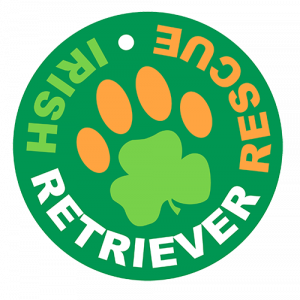If you are already a fosterer, or are thinking of becoming one, please read the notes below.
Behaviour
If dogs are found to have any major behavioural problems, we will try to place them with a fosterer who is also a behaviourist and trainer if one is available. We share all the information we are given about individual dogs with the fostering family they are matched to. Sometimes this is comprehensive, others we know very little about the dog coming into rescue.
Please remember that some of these dogs may have had a very poor start in life, they may never have lived in a home so it may take them some time to settle into their new environment. Fosterers need a great deal of patience and understanding when dealing with their foster dogs.
Assessment
A major part of the role of fosterer for IRR is to continually assess the dog placed with you in your own home setting. You will be supported and advised throughout the process as it will be your assessments that help our adoption team find an adopter who is perfectly matched to your foster dog.
Veterinary Care
If veterinary treatment is required for a foster dog IRR must be advised in all cases. IRR will cover all veterinary expenses.
Diet
The dogs need a good, healthy diet and as much fresh air and exercise as possible. This may have to be built up slowly in certain cases for example, where a dog is severely malnourished. Fosterers normally pay for food out of their own pockets but can contact IRR for assistance if this is difficult.
Exercise
When exercising IRR rescue dogs, we ask that our fosterers keep the dog on the lead at all times when in public areas. The dog may not have received any proper training and might not respond immediately to recall commands.
They may well be scared of their new surroundings. When exercising near busy roads, there is an increased risk of them running into the road and being injured or worse still, causing a traffic accident so fosterers need to be aware of the dangers when out and about.
There may be aspects of their temperament which are not fully known and the dog may exhibit unexpected behaviour when coming into contact with other dogs. Do not allow your dog to run up to another dog even if they are both on lead, introduce them gradually and under full control.
Small children and even some adults can be frightened of an dog approaching them to them no matter how friendly the dog might be, so always be aware. You won’t know how your foster dog will react to anyone or anything in the early days.
Never use a flexi-lead, it only takes 1/4 sec for a dog and person to be pulled under the wheels of a vehicle. A long line can be attached to the dog when you get to a safe area instead. You will have more control and feel a lot safer.
All our foster dogs will be provided with identity tags with the fosterer’s surname and contact telephone numbers, both land-line and mobile which should be attached to this collar.
When exercising IRR rescue dogs, we ask that our fosterers keep the dog on the lead at all times when in public areas (unless you have a totally secure area in which to exercise them). The dog may not have received any proper training and might not respond immediately to recall commands.
They may well be scared of their new surroundings. When exercising near busy roads, there is an increased risk of them running into the road and being injured or worse still, causing a traffic accident.
There may be aspects of their temperament which are not fully known and the dog may exhibit unexpected behaviour when coming into contact with other dogs. Do not allow your dog to run up to another dog that is on a lead. Many dogs are kept on leads because they may have behavioural problems. Small children and even some adults can be frightened of an unleashed dog running up to them no matter how friendly the dog might be.
Never use a flexi-lead, it only takes 1/4 sec for a dog and person to be pulled under the wheels of a vehicle. A long line can be attached to the dog when you get to a safe area instead. You will have more control and feel a lot safer.
Needless to say, all dogs should be wearing identity tags with the fosterer’s surname and contact telephone numbers, both land-line and mobile, clearly visible which will be provided by IRR.
Letting Go
Finally, once the assessments are completed and a match with an adopter has been made, the fosterers have to be brave and let their charges go. This is often the hardest part of the job. However, it’s is also the most worthwhile, especially when they see their foster dog healthy and happy with their forever families at our Reunions.
Fostering for IRR is not a fast track to adopting and by-passing the normal waiting list. Although occasionally fosterers do adopt their charges it is usually because the dog has complex needs and there is no suitable potential adopter identified.
If you are interested in becoming a fosterer, please complete the Foster Application Form.
